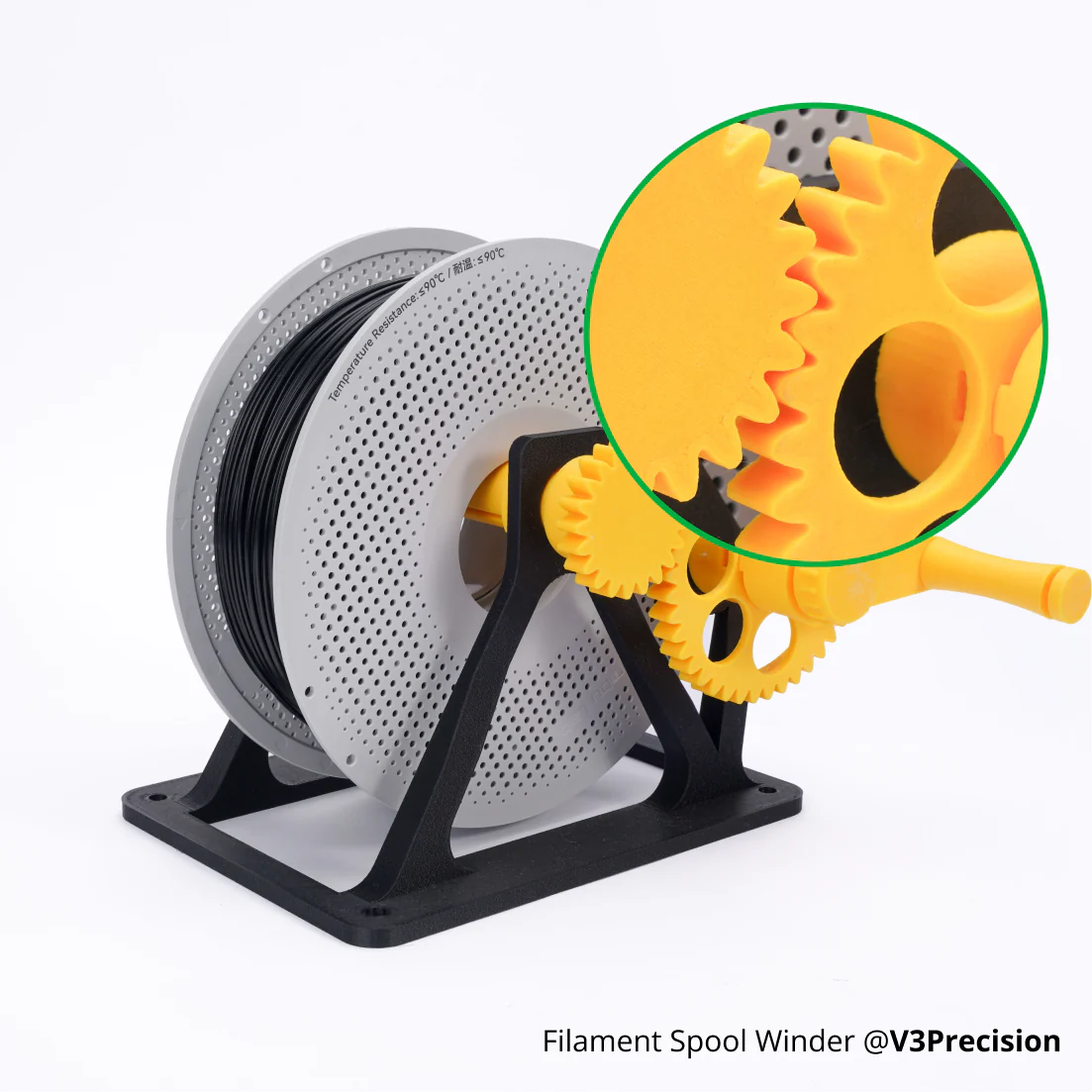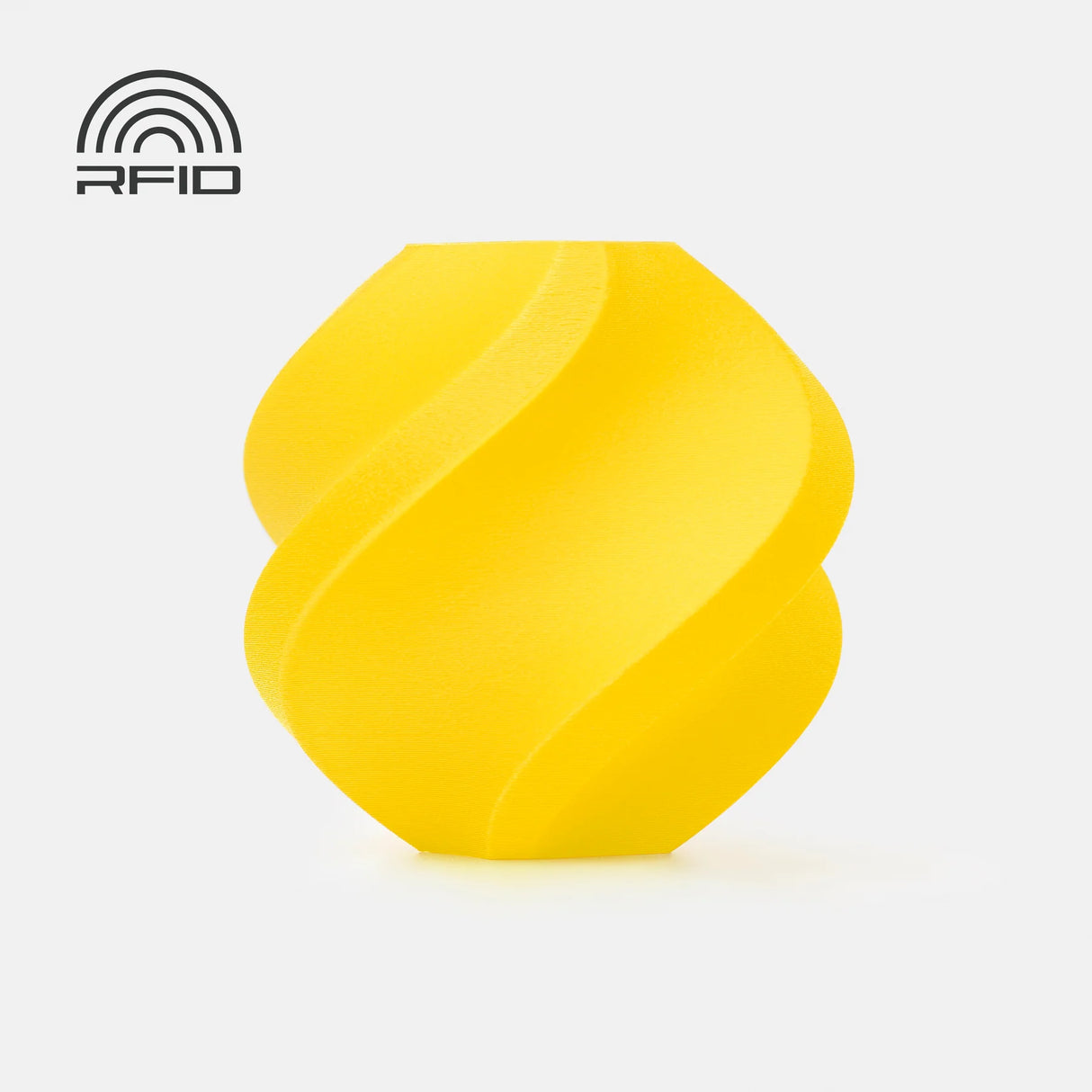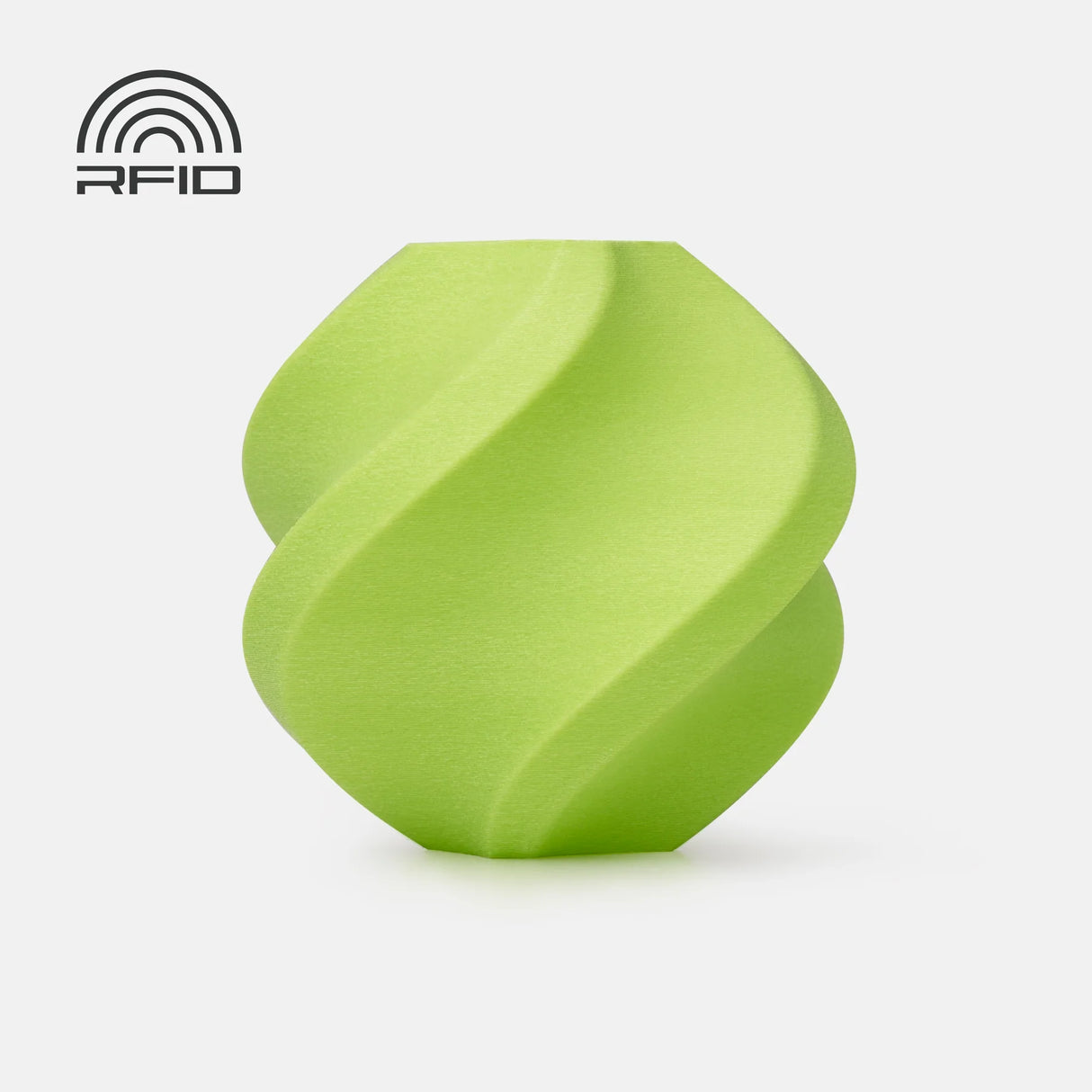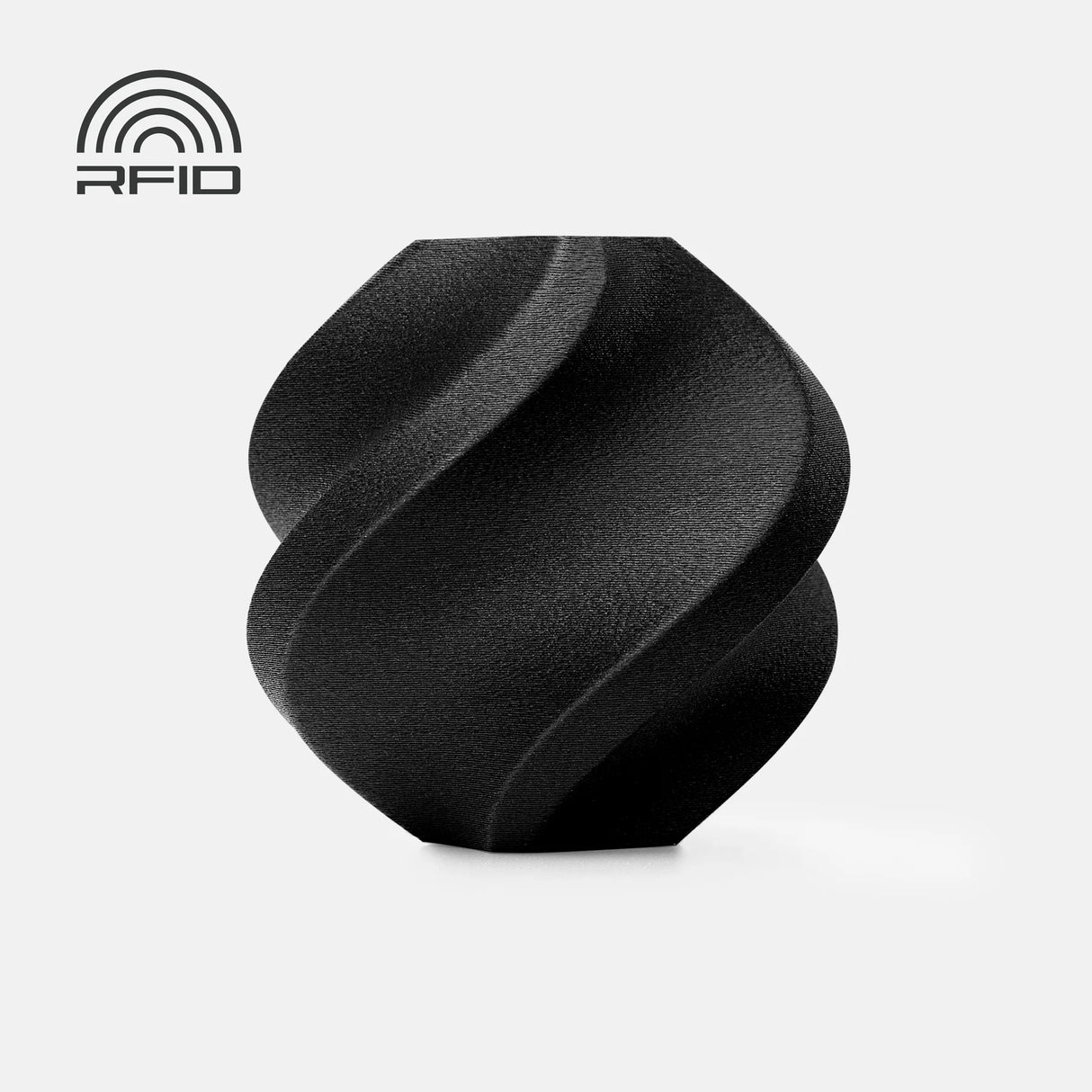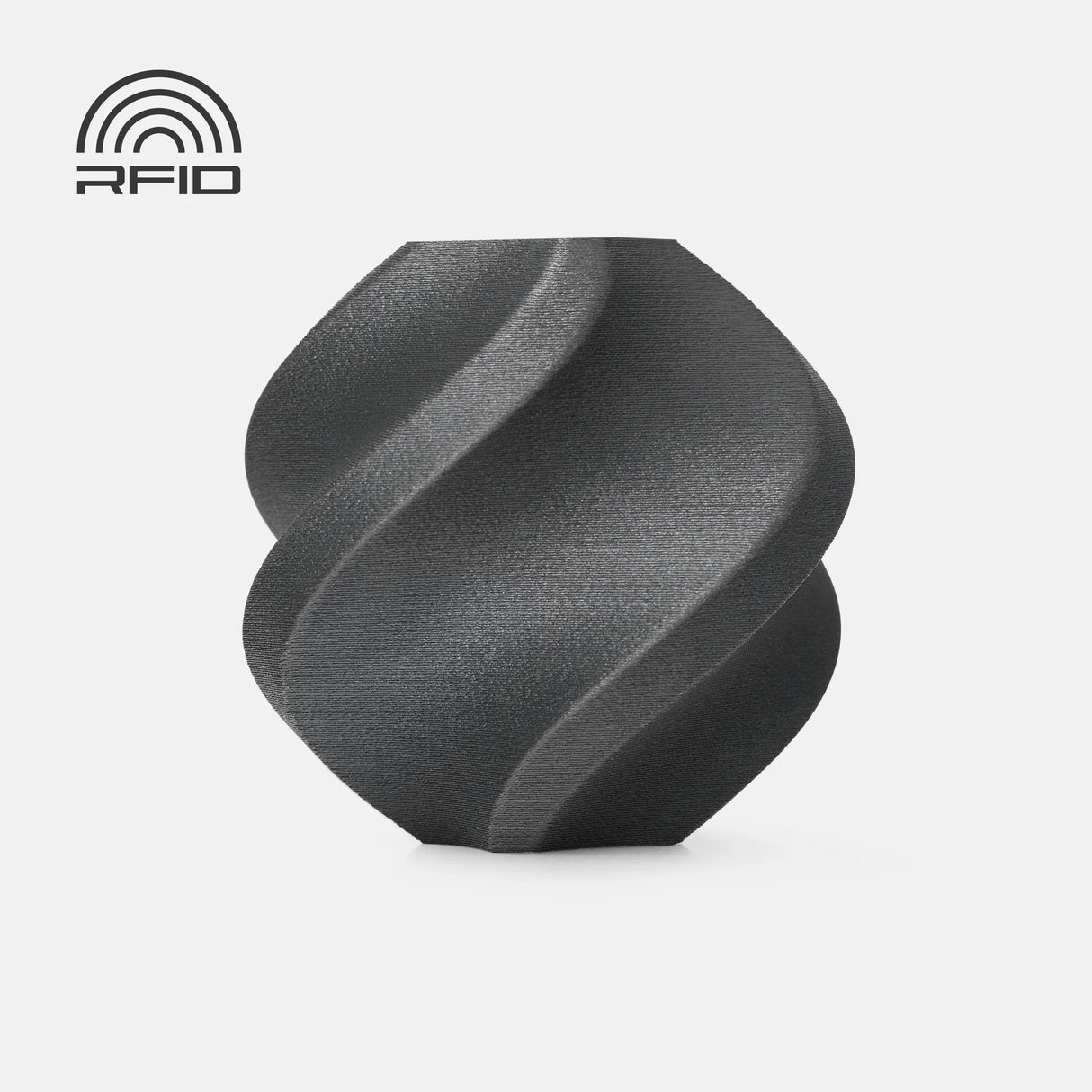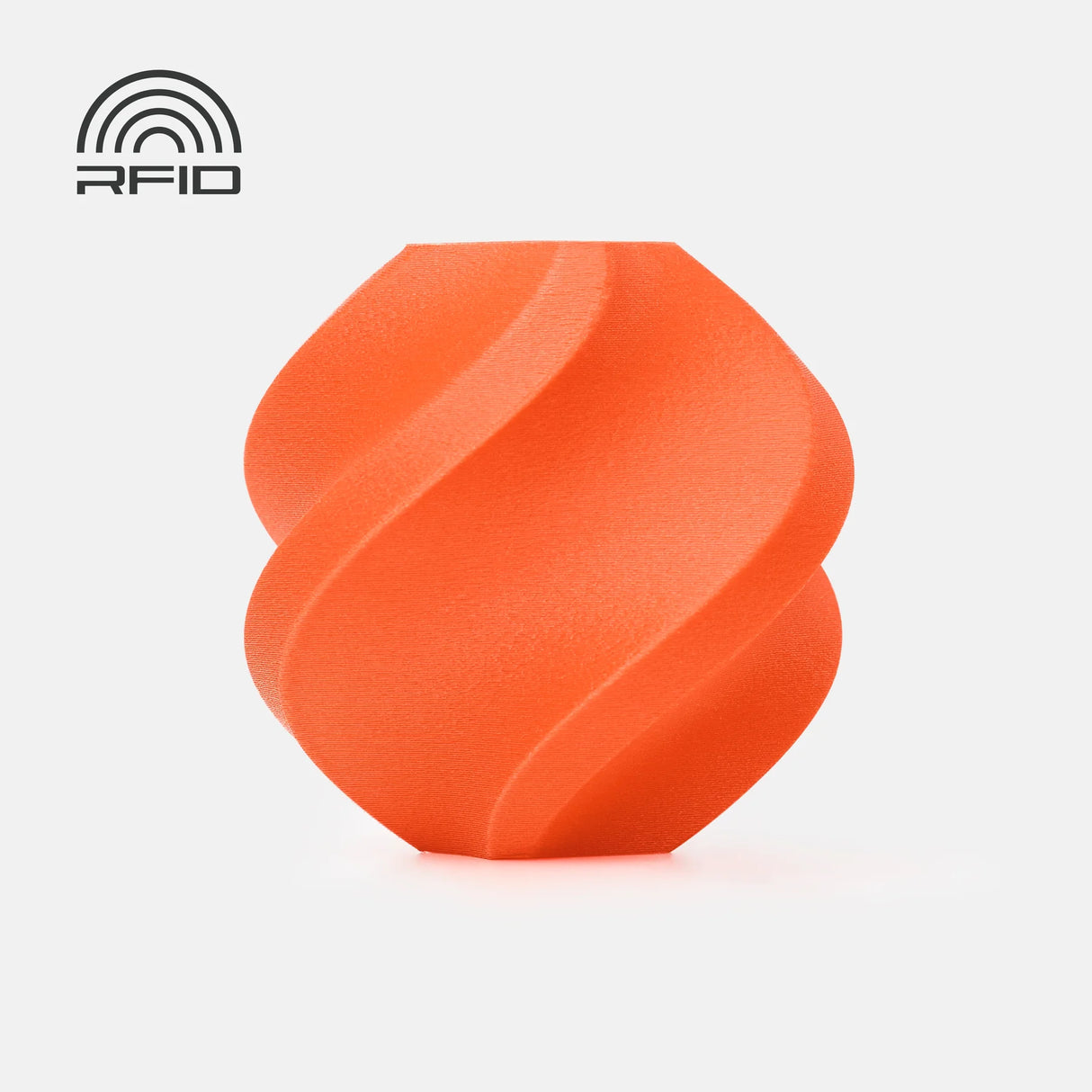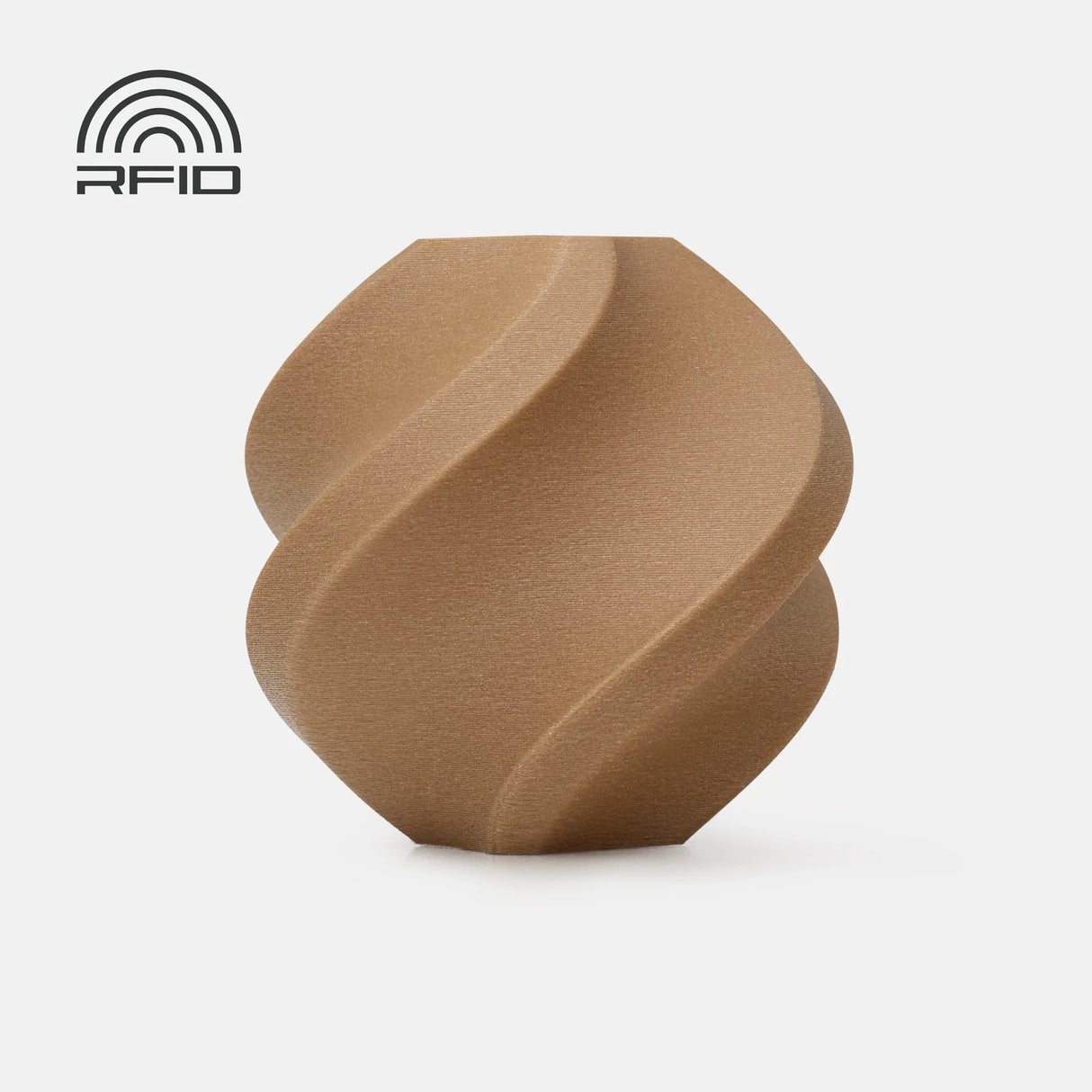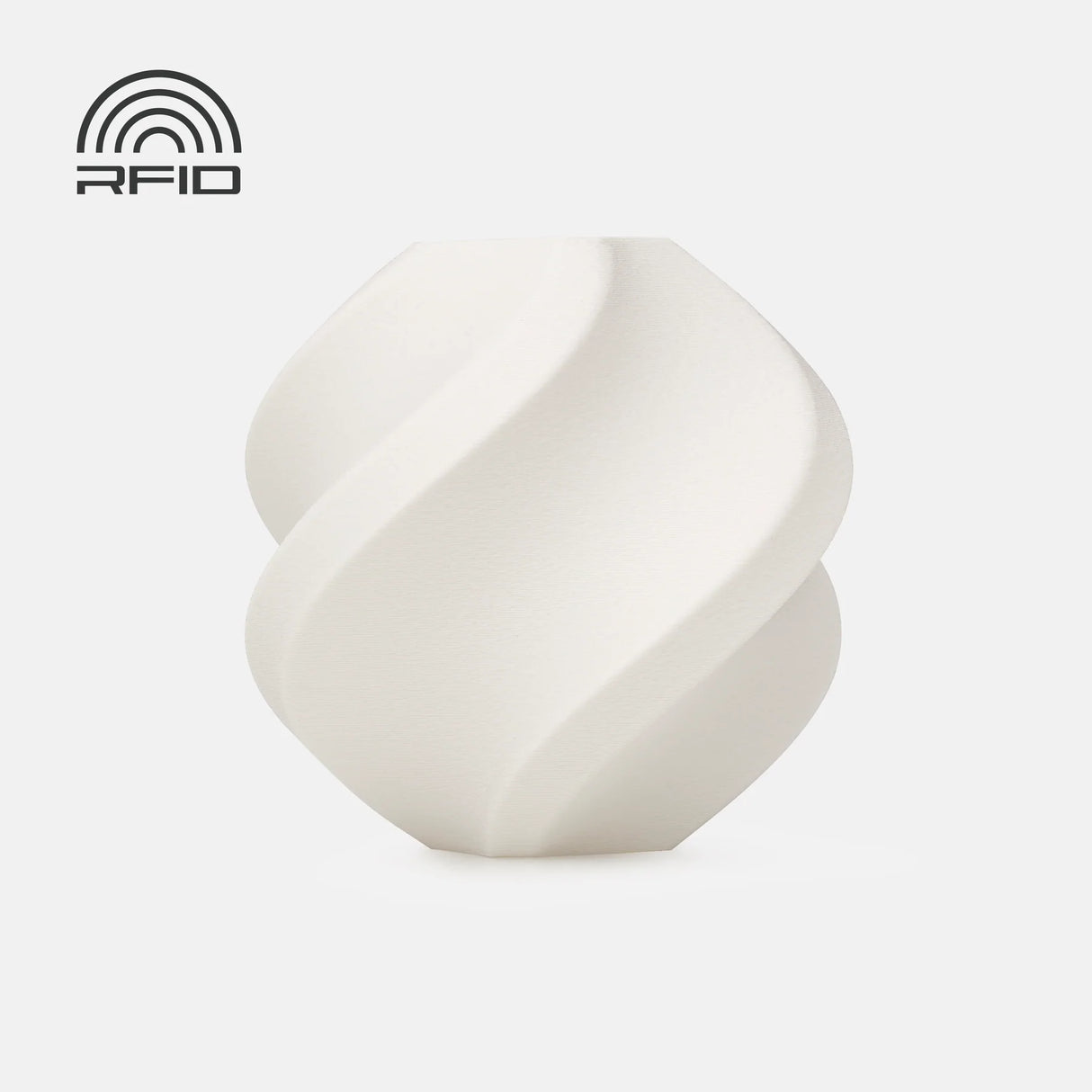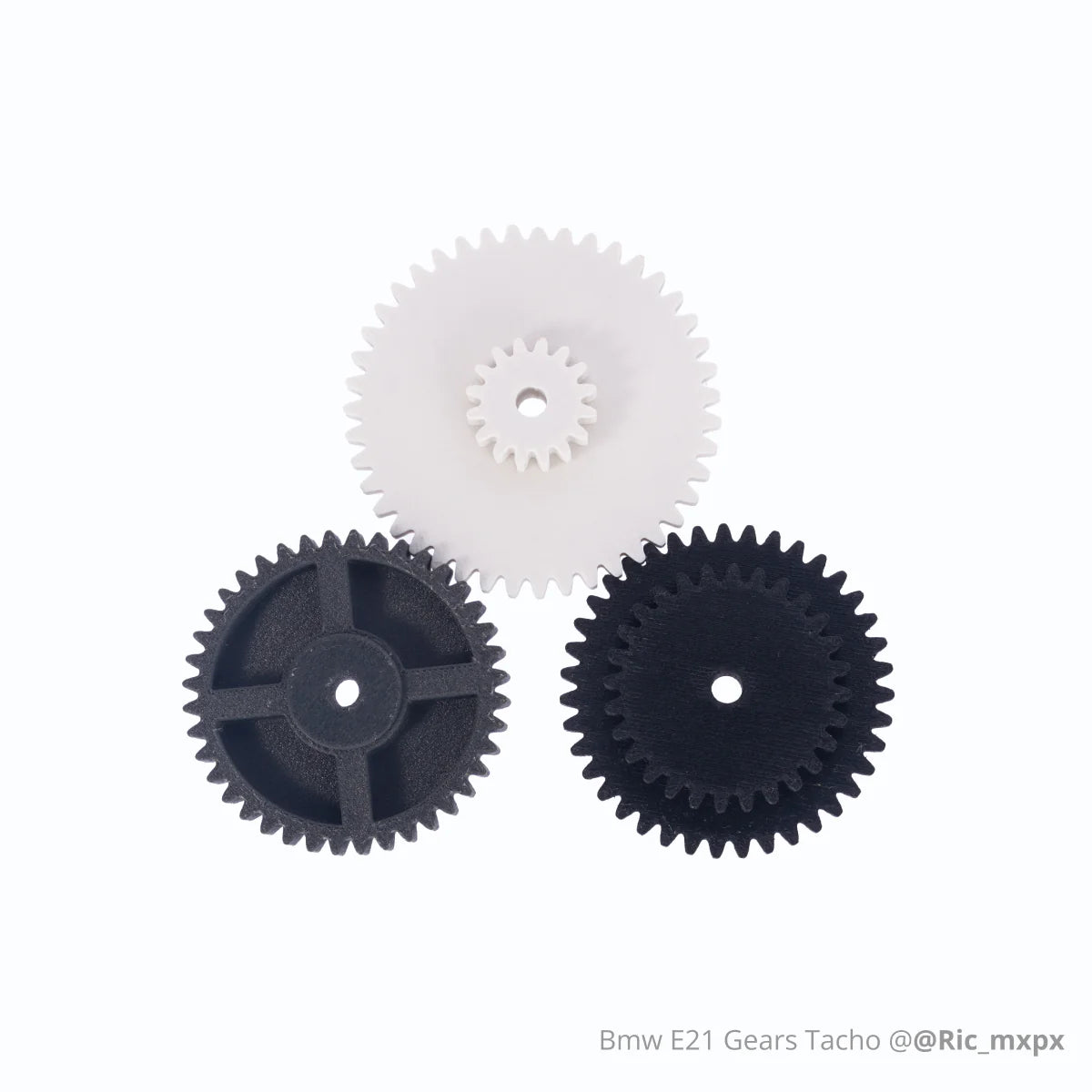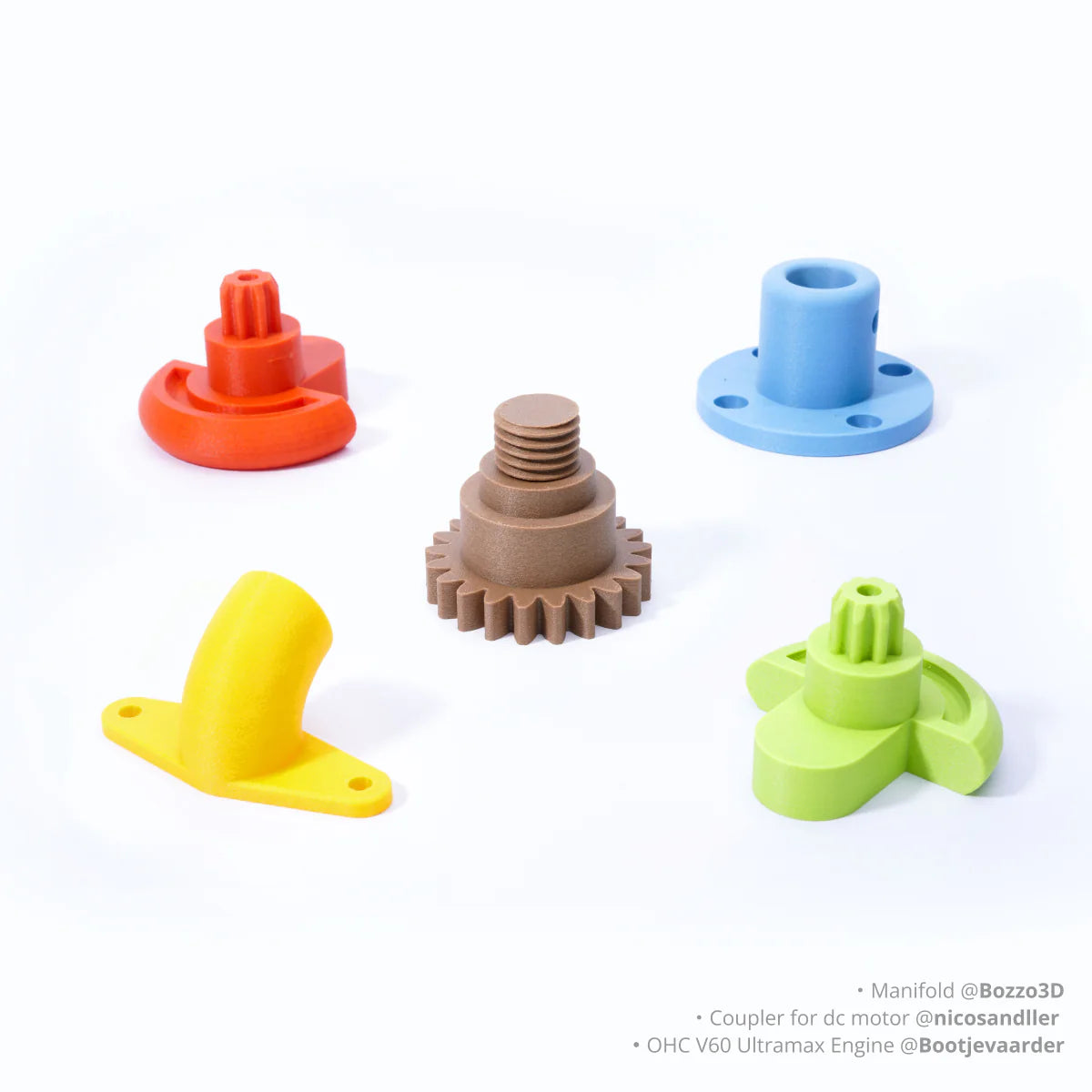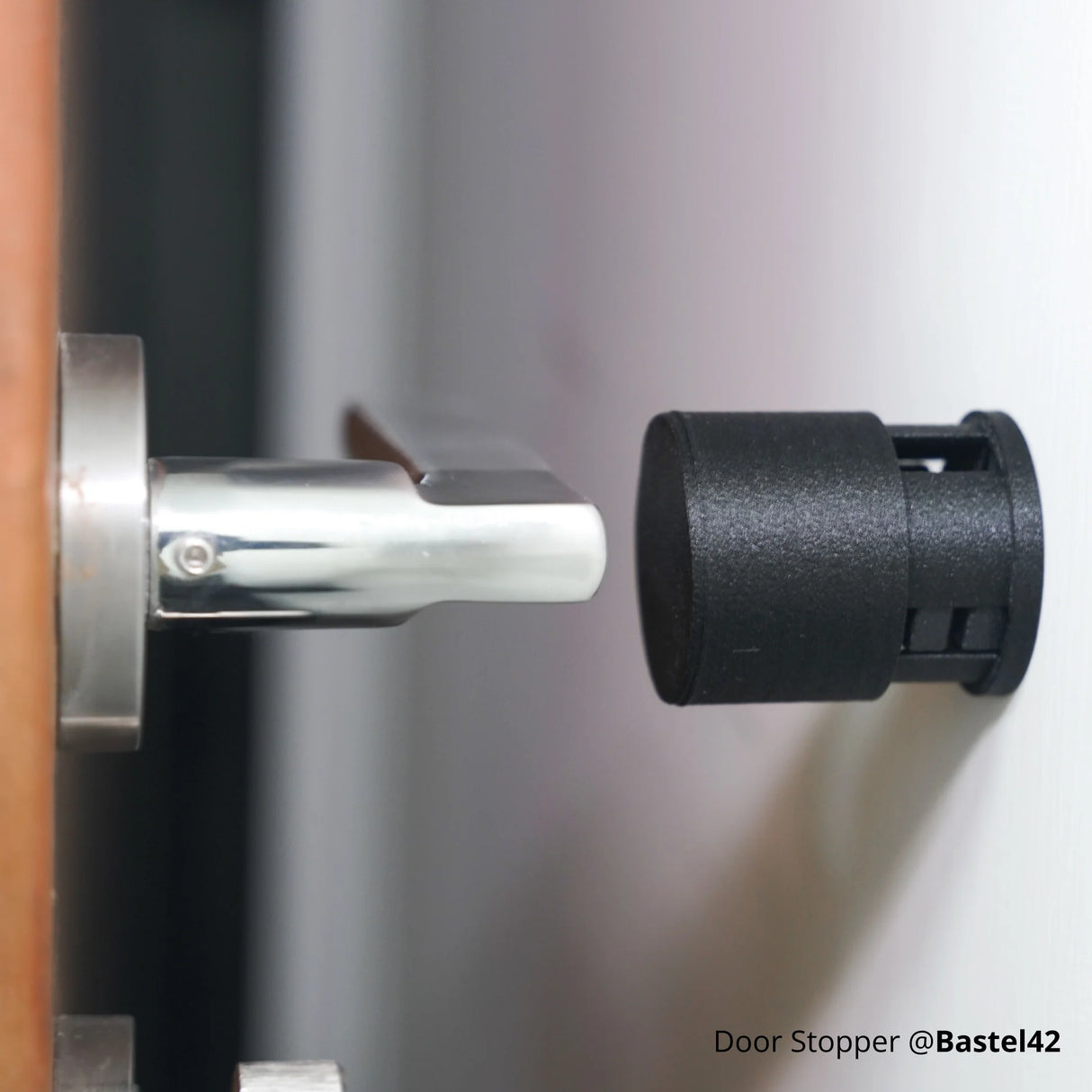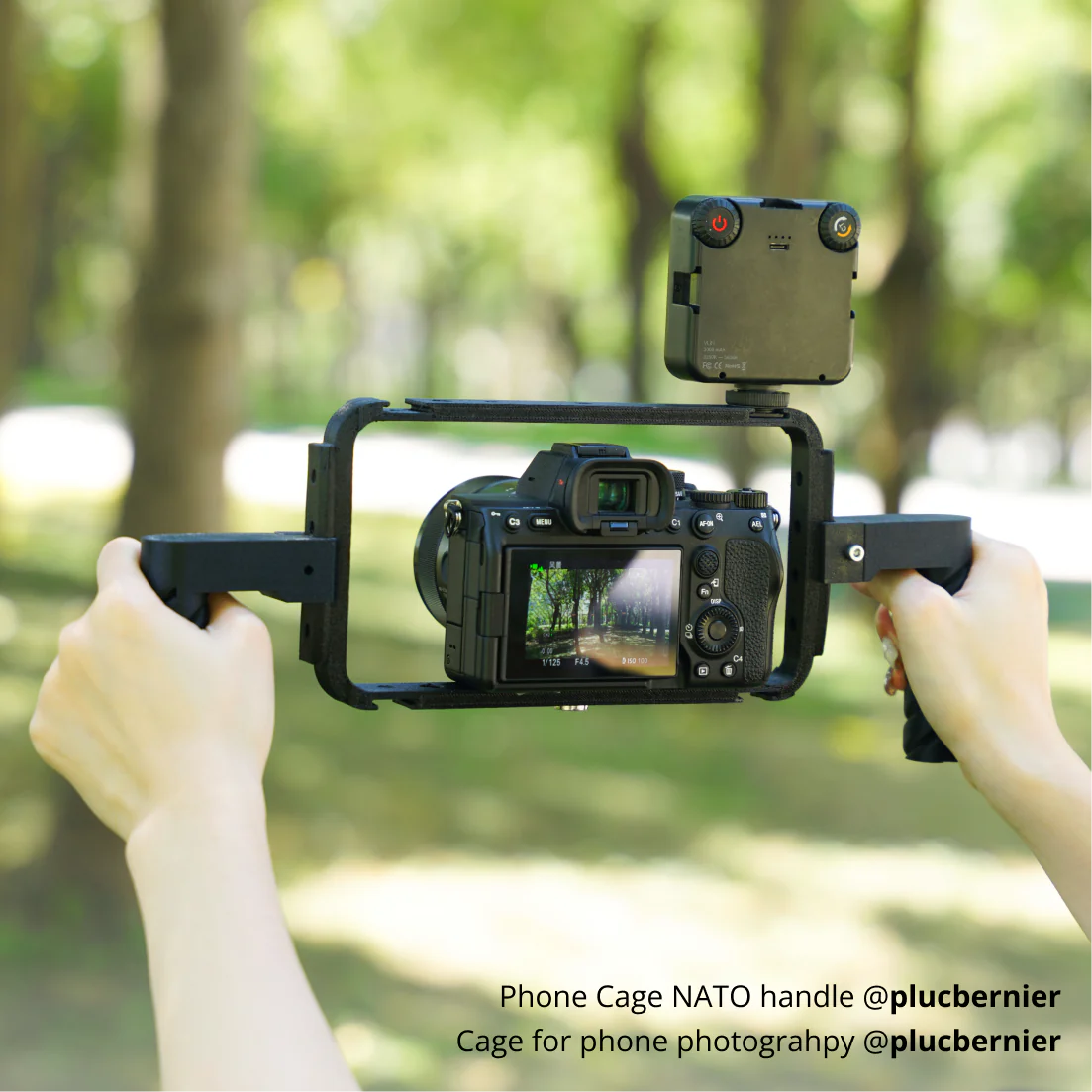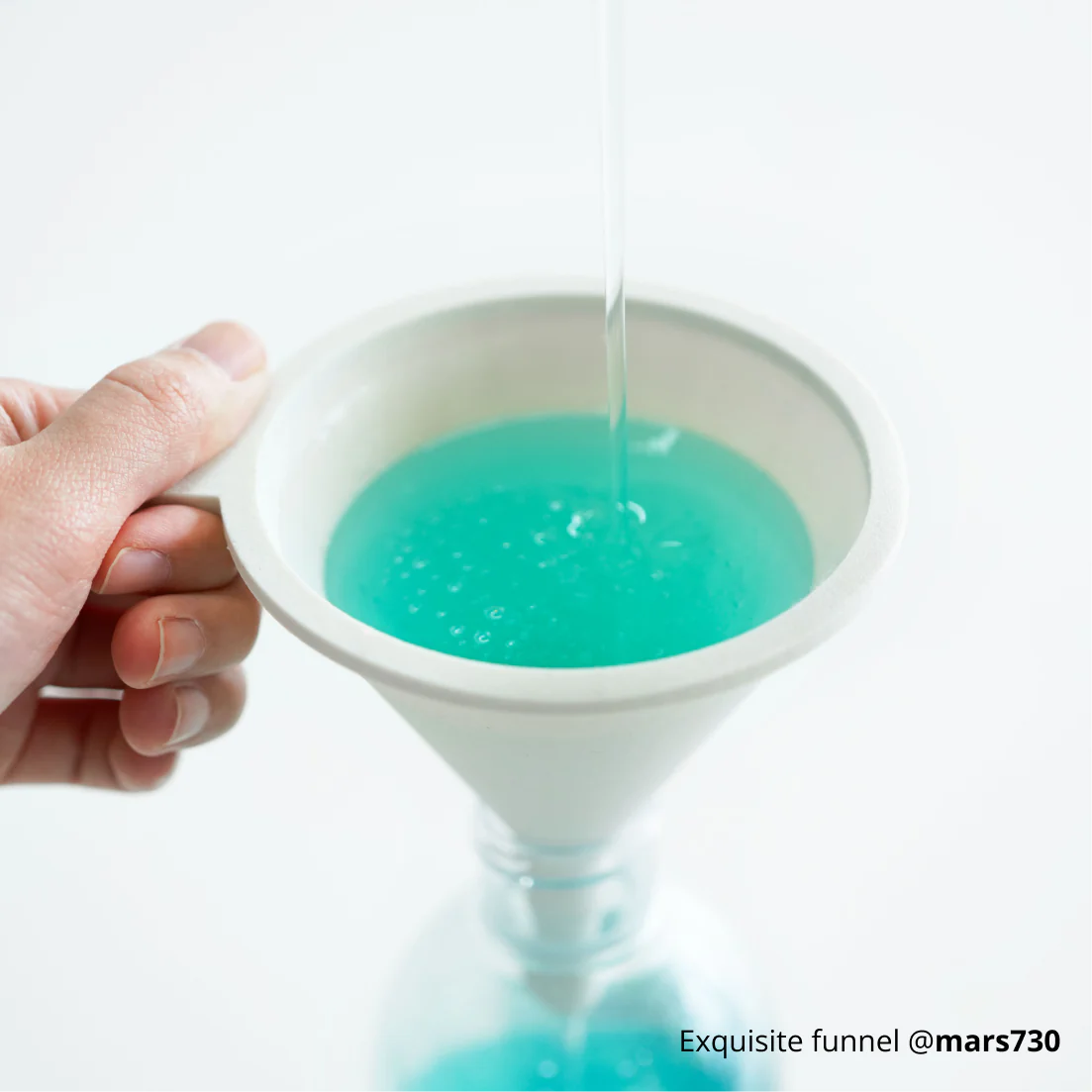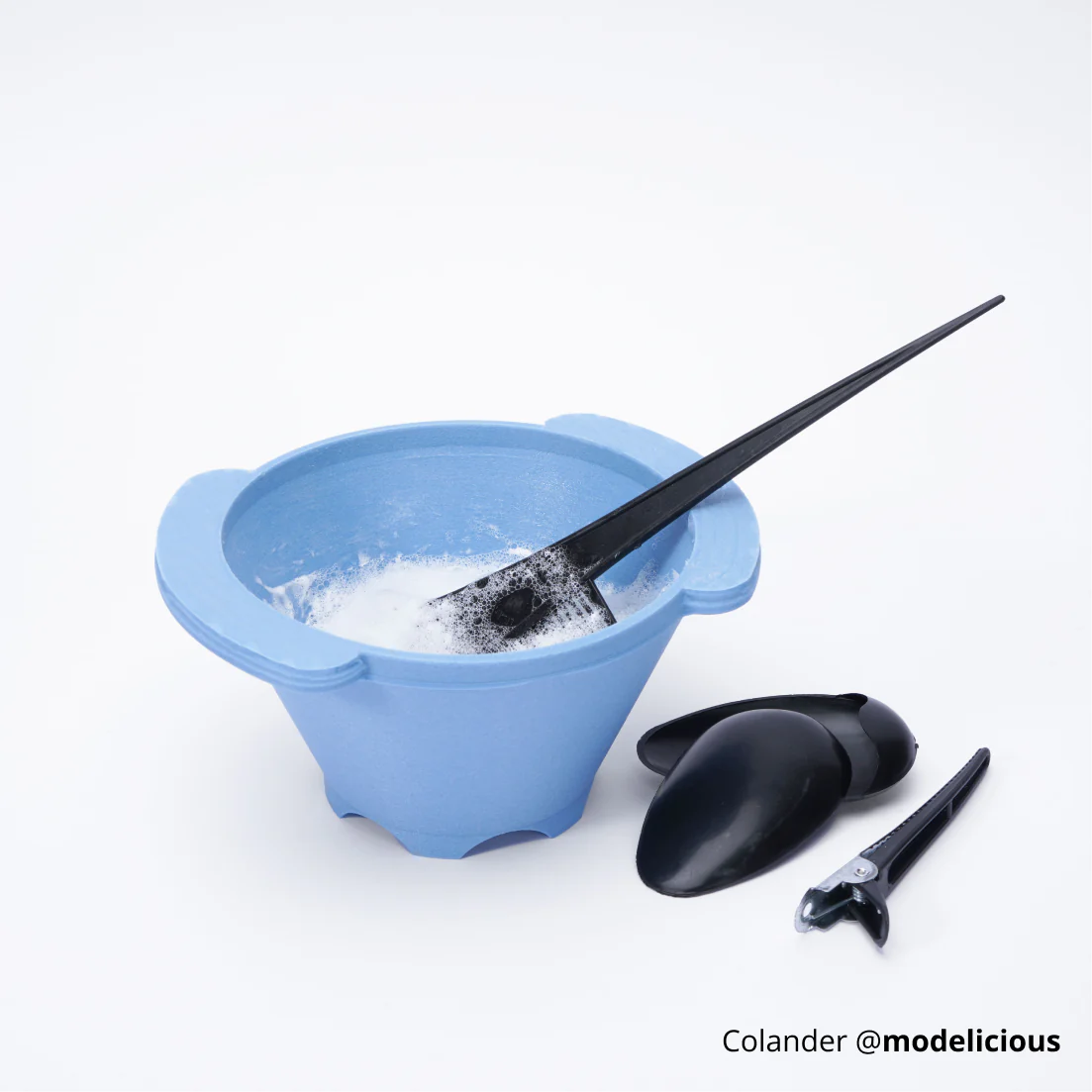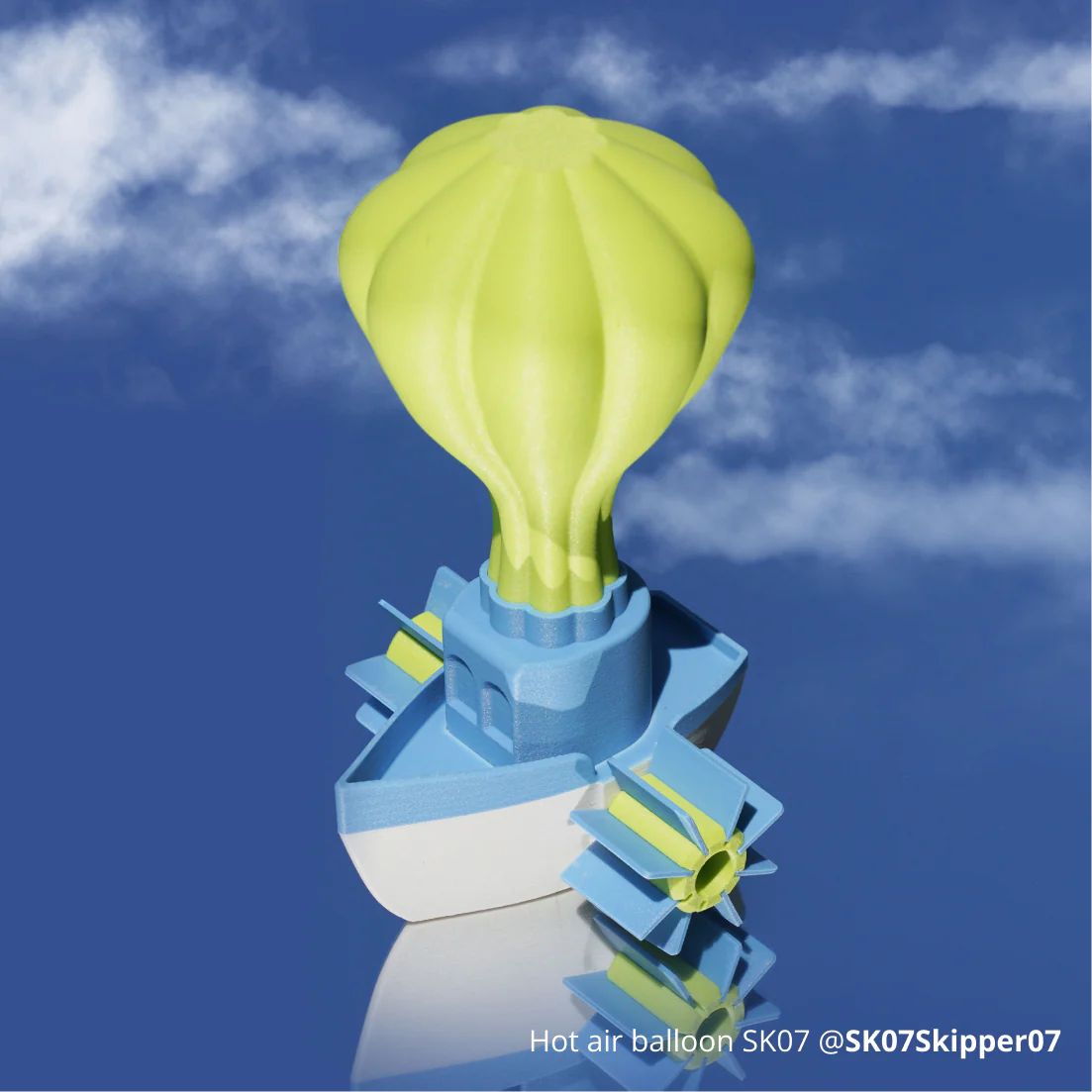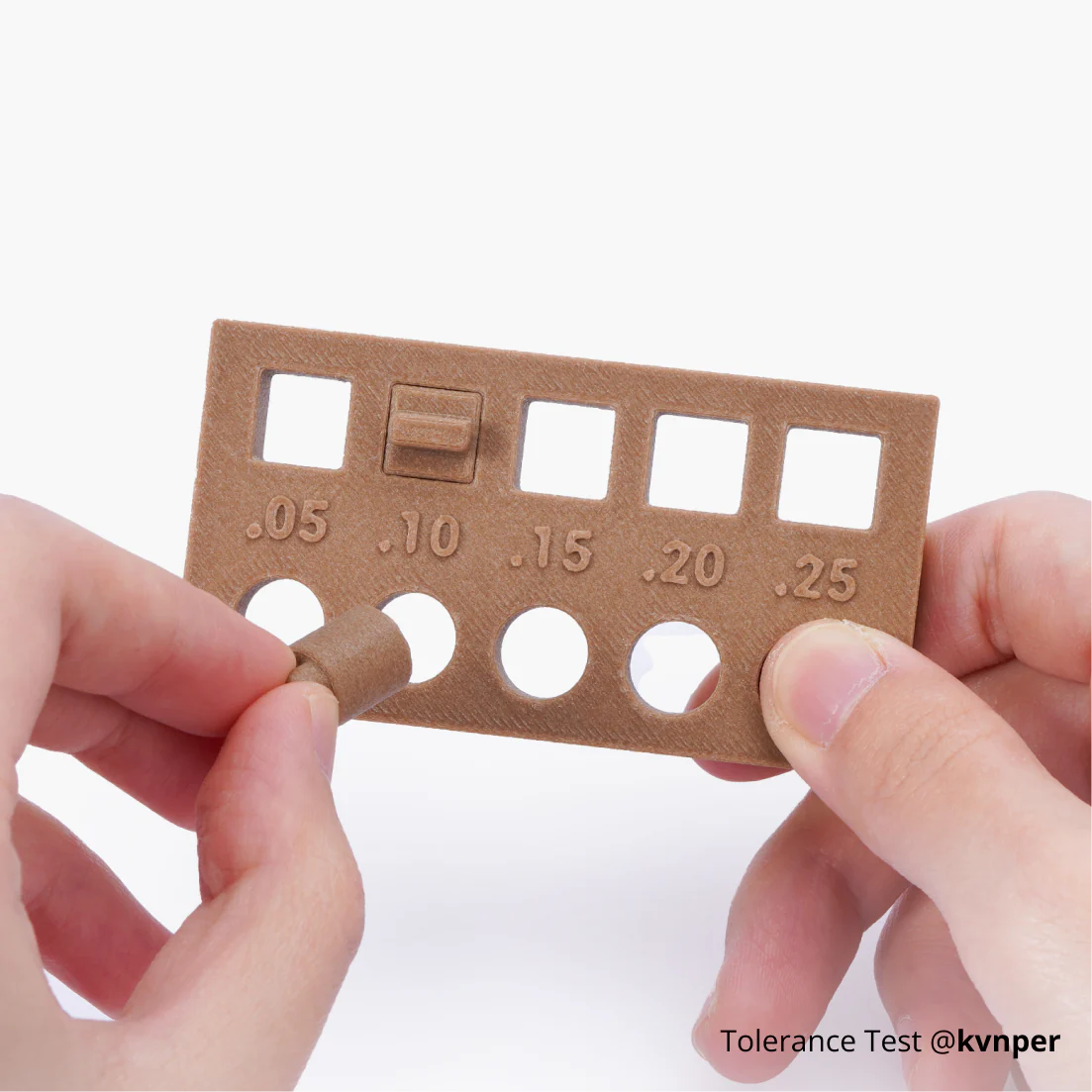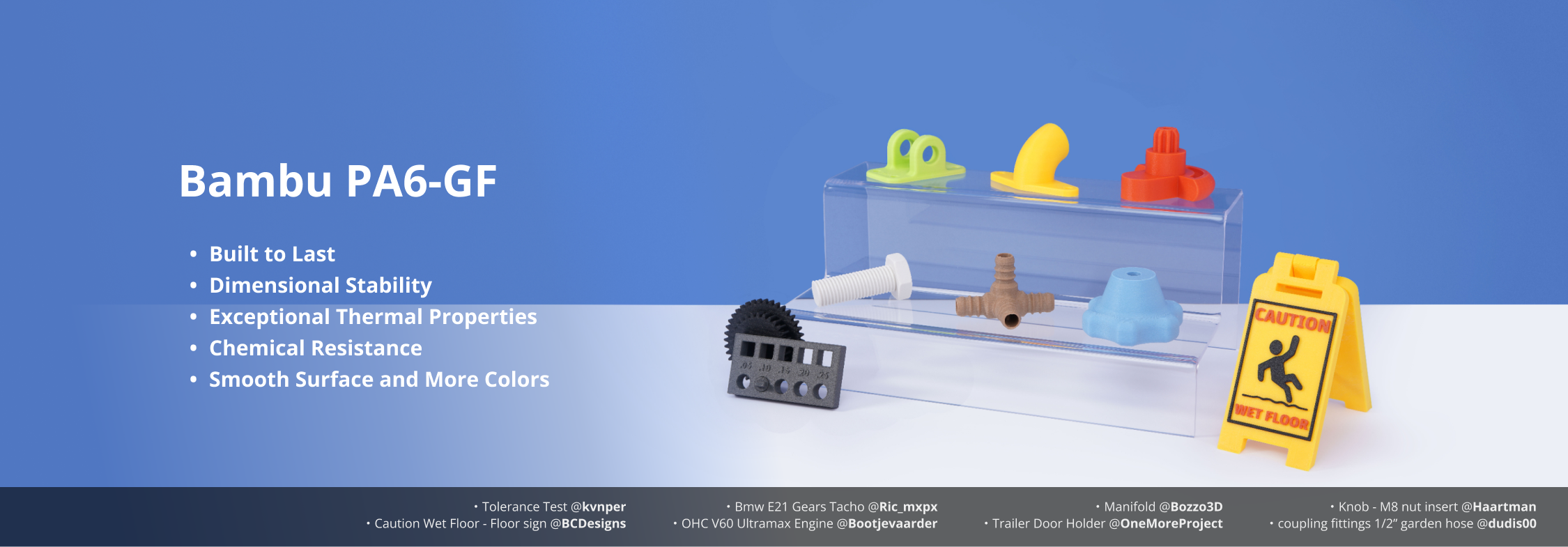Bambu PA6-GF Glass Fiber-Reinforced Nylon
Description
Description
Bambu PA6-GF Glass Fiber-Reinforced Nylon
Bambu PA6-GF, also known as Nylon 6 with Glass Fiber, stands at the forefront of high-performance engineering plastics. Engineered to deliver exceptional strength, durability, dimensional stability. The PA6-GF is also more cost effective when compared to other top tier engineering filaments.
PA6-GF boasts unparalleled dimensional stability thanks to its glass fiber reinforcement, minimizing warping in comparison to standard PA filaments. Print with precise dimensions, even in the most intricate geometries.
Bambu PA6-GF is exceptionally strong and durable due to reinforced glass fibers, making it the perfect choice for prints that need to withstand heavy use and resist bending or breaking.
- Note: The printed part achieves better toughness after exposure to moisture.
PA6-GF boasts a high heat deflection temperature and superior dimensional stability, enabling it to retain its mechanical properties even under elevated temperatures. This makes it ideal for demanding industrial and automotive applications.
PA6-GF offers excellent resistance to chemicals, oils, and many kinds of solvents, ensuring long-term performance in challenging environments.
Printing Tips
• Bambu PA6-GF needs proper drying before printing: recommended drying temperature is 80 ℃ for 8 to 12 hours in a blast drying oven, or 90 to 100 ℃ for 10 to 12 hours on heat bed. (Do not exceed 100 ℃ because the spool may deform or even melt). For more details, please refer to: Printing tips for Engineering materials on WIKI.
• To prevent the filament from absorbing moisture, it is recommended to use an airtight storage container with desiccant during printing. For more details, please refer to: Printing tips for Engineering materials on WIKI.
• To minimize warping, avoid printing large-sized high infill density models. Use enclosed printers and ensure the build plate is properly applied with glue for better print adhesion before printing.
• For better print results and more details, please refer to: Printing tips for Engineering materials on WIKI.
Post-processing Tips
• We recommend removing the support structures within 2 hours after printing to prevent them from sticking after absorbing moisture. If sticking occurs, dry the model to ease the removal.
• Placing the printed part in a convection oven set between 80 to 130 degrees Celsius for 5 to 12 hours can further enhance the strength and rigidity of the print. Note: The effectiveness of this process depends on the structure, size, and conditions of the printed model. Some models may warp or deform after annealing. For more details, please refer to: Work after Printing Finished on WIKI.
| PA6-GF | PA6-CF | PAHT-CF | |
| Composition | PA6, glass fiber | PA6, carbon fiber | PA12 and other long-chain PA, carbon fiber |
| AMS Compatibility | YES | NO | YES |
| Dry Out Before Use | Required | Required | Required |
| Printing Speed | < 130 mm/s | < 100 mm/s | < 100 mm/s |
| Printer Type | Enclosure | Enclosure | Enclosure |
| Toughness (Impact Strength - XY, dry state) | 27.2 kJ/m² | 40.3 kJ/m² | 57.5 kJ/m² |
| Toughness (Impact Strength - XY, wet state) | 55.8 kJ/m² | 57.2 kJ/m² | 62.3 kJ/m² |
| Strength (Bending Strength - XY, dry state) | 120 MPa | 151 MPa | 125 MPa |
| Strength (Bending Strength - XY, wet state) | 71 MPa | 95 MPa | 115 MPa |
| Layer Strength (Bending Strength - Z, dry state) | 51 MPa | 80 MPa | 61 MPa |
| Layer Strength (Bending Strength - Z, wet state) | 33 MPa | 45 MPa | 49 MPa |
| Stiffness (Bending Modulus - XY, dry state) | 3670 MPa | 5460 MPa | 4230 MPa |
| Stiffness (Bending Modulus - XY, wet state) | 2120 MPa | 3560 MPa | 3640 MPa |
| Layer Adhesion (Impact Strength - Z, dry state) | 4.1 kJ/m² | 15.5 kJ/m² | 13.3 kJ/m² |
| Heat Resistance(HDT, 0.45 MPa, Dry State) | 182 ℃ | 186 ℃ | 194 ℃ |
| Saturated Water Absorption Rate/%(25 °C, 55% RH) | 2.56 | 2.35 | 0.88 |
| Recommended Printing Settings | |
| Drying Settings before Printing | 80 °C, 8 - 12 h |
| Printing and Keeping Container's Humidity | < 20% RH (Sealed, with Desiccant) |
| Nozzle Temperature | 260 - 290 °C |
| Bed Temperature (with Glue) | 80 - 100 °C |
| Printing Speed | < 130 mm/s |
| Physical Properties | |
| Density | 1.09 g/cm³ |
| Vicat Softening Temperature | 212 °C |
| Heat Deflection Temperature | 186 °C |
| Melting Temperature | 223 °C |
| Melt Index | 6.8 ± 0.6 g/10 min |
| Mechanical Properties | |
| Tensile Strength | 102 ± 7 MPa |
| Breaking Elongation Rate | 5.8 ± 1.6 % |
| Bending Modulus | 5460 ± 280 MPa |
| Bending Strength | 151 ± 8 MPa |
| Impact Strength | 40.3 ± 2.5 kJ/m² |


